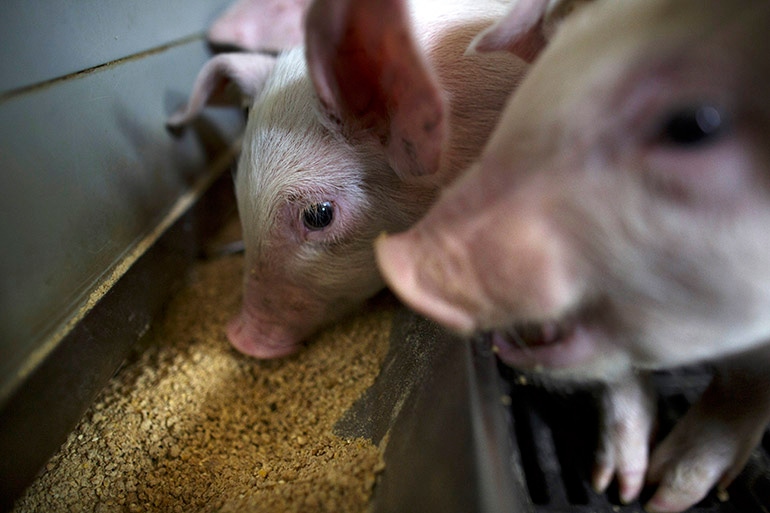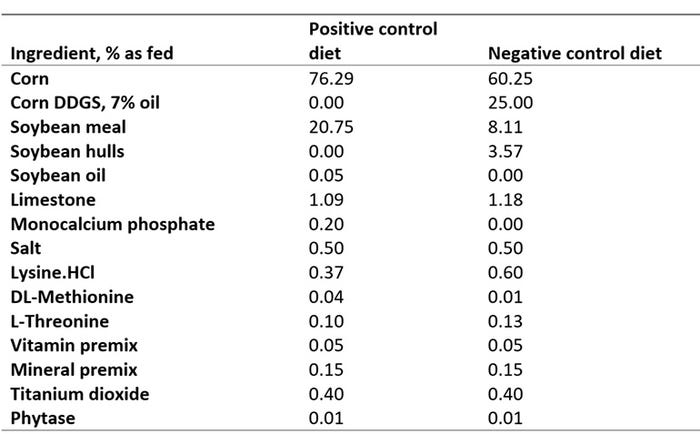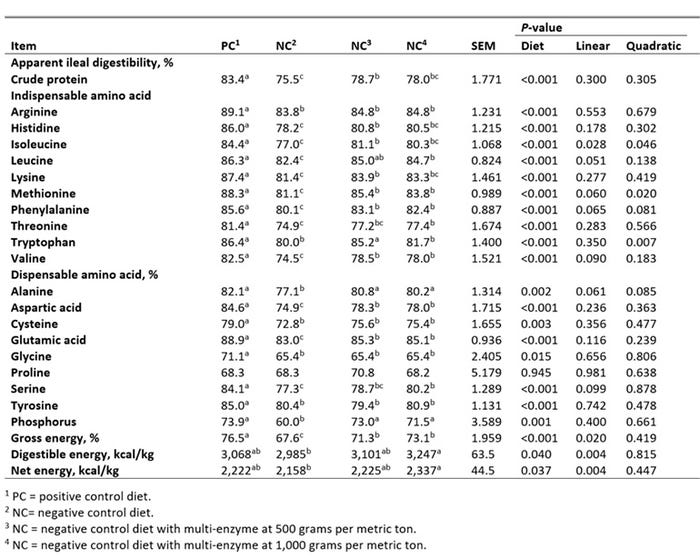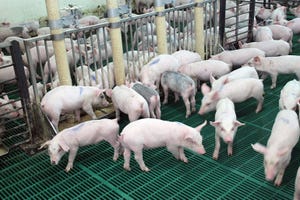Multi-enzyme supplementation improved dietary digestible energy, net energy and nutrient digestibility.
October 4, 2018

By T. Woyengo and J.W. Lee, South Dakota State University Department of Animal Science; and R. Patterson, Canadian Bio-Systems Inc.
Corn distiller’s dried grains with solubles is one of the most popular cereal grain co-products used in formulating swine diets. Corn DDGS has a high content of dietary fiber, which is poorly digested by pigs and can reduce utilization of dietary nutrients. Fiber-degrading enzymes can potentially improve energy and nutrient availability in DDGS for pigs. However, reports on the effect of adding fiber-degrading enzymes to DDGS-based diets for pigs are inconsistent with most studies having shown no improvement in energy and nutrient availabilities in pigs fed DDGS-based diets due to supplemental fiber-degrading enzymes. This is likely due to the fact that DDGS-based diets contain different types of fiber.
Thus, supplementation of DDGS-based diets for pigs with a multi-enzyme product that contains enzymes that degrade a broad spectrum of fiber types found in the DDGS-based diets for pigs can result in increased availability of dietary energy and nutrients.
Recent research at South Dakota State University looked at the effect of supplementing DDGS-based diets for growing pigs with a multi-enzyme supplement on energy value and nutrient availability. In this study, energy value included apparent ileal digestibility of energy, digestible energy and net energy values, whereas nutrient availability included apparent ileal digestibility of amino acids and phosphorus.
Eight ileal-cannulated barrows (initial body weight of 38.7 kilograms) were fed four diets in a replicated 4 × 4 Latin square design to give eight replicates per diet. Diets were positive control diet, and negative control diet without or with multi-enzyme at 0.5 or 1.0 gram per kilogram (Table 1). The positive control diet was formulated to meet National Research Council (2012) nutrient recommendations for grower pigs except for calcium and digestible phosphorus, which were lower than NRC (2012) recommendations by 0.17 and 0.13 percentage points, respectively. The negative control diet was the same as positive control diet except that it was lower in net energy by 75 kilocalories per kilogram, and standardized ileal digestible amino acid content by a mean of 3%. This was achieved by a partial replacement of corn and soybean meal and a complete replacement of soybean oil and monocalcium phosphate with 25% corn DDGS and 3.6% soybean hulls. The multi-enzyme product at 1.0 gram per kilogram supplied 1,900 U of xylanase, 300 U of β-glucanase, 1,300 U of cellulase, 11,500 U of amylase, 120 U of mannanase, 850 U of pectinase, 6,000 U of protease and 700 U of invertase per kilogram of diet. Both positive control and negative control diets contained phytase at 1,000 FTU per kilogram.

Table 1: Ingredient composition of experimental diets
The apparent ileal digestibility of protein, essential amino acids, phosphorus and energy for pigs fed the positive control diet was greater than that for pigs fed the negative control diet (Table 2). However, the digestible energy and net energy values of pigs fed the positive control diet were similar to those for pigs fed the negative control diet. An increase in the level of supplementation of multi-enzyme to the negative control diet from zero to 1.0 gram per kilogram of diet resulted in an increase in the apparent ileal digestibility of energy, most amino acids and phosphorus, and digestible energy and net energy values. The apparent ileal digestibility of phosphorus, and digestible energy and net energy values for negative control diet with multi-enzyme at 1.0 gram per kilogram reached those for the positive control diet.

Table 2: Apparent ileal digestibility of energy and nutrients, and digestible energy and net energy values for the experimental diets
In summary, the results show that multi-enzyme supplementation improved dietary digestible energy, net energy and nutrient digestibility. Thus, the multi-enzyme fed in the current study could be used to improve energy value and nutrient availability of low-energy-amino acid DDGS-based diets for grower pigs.
You May Also Like



